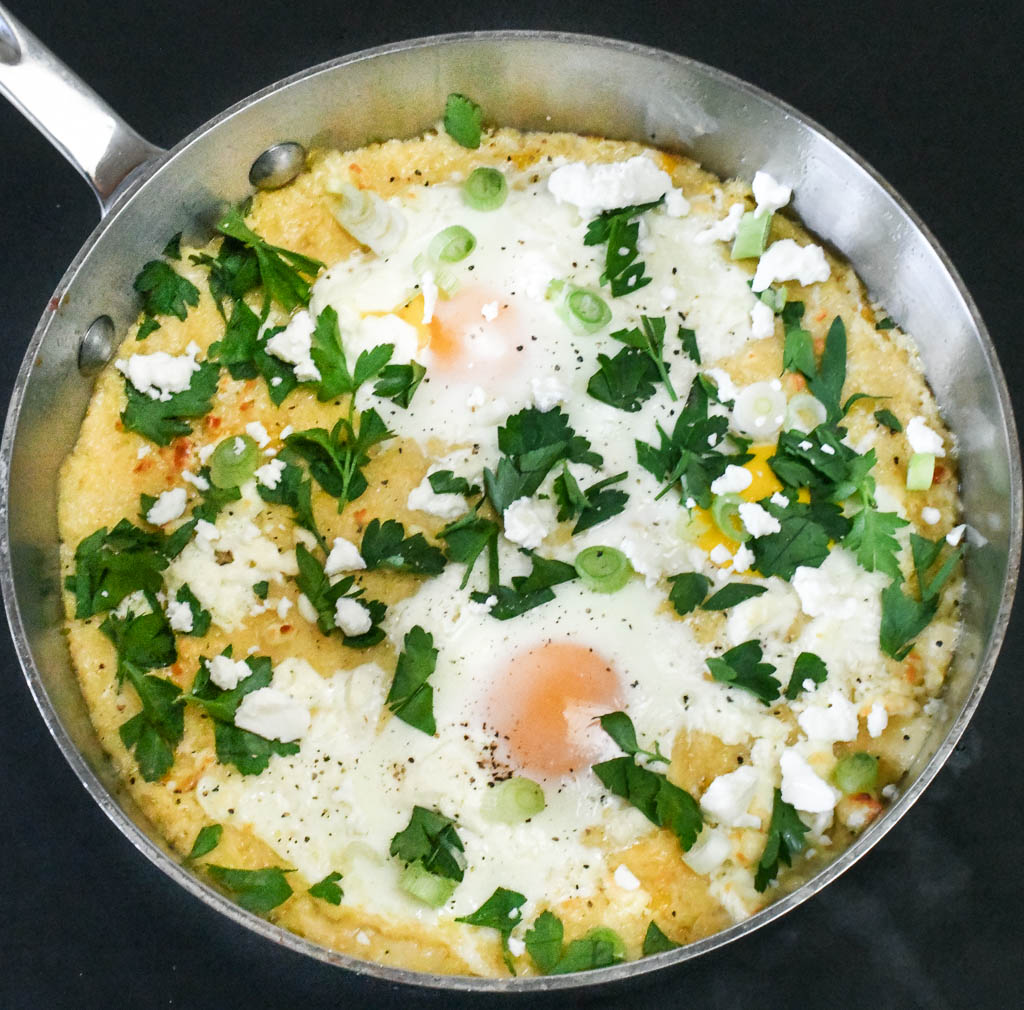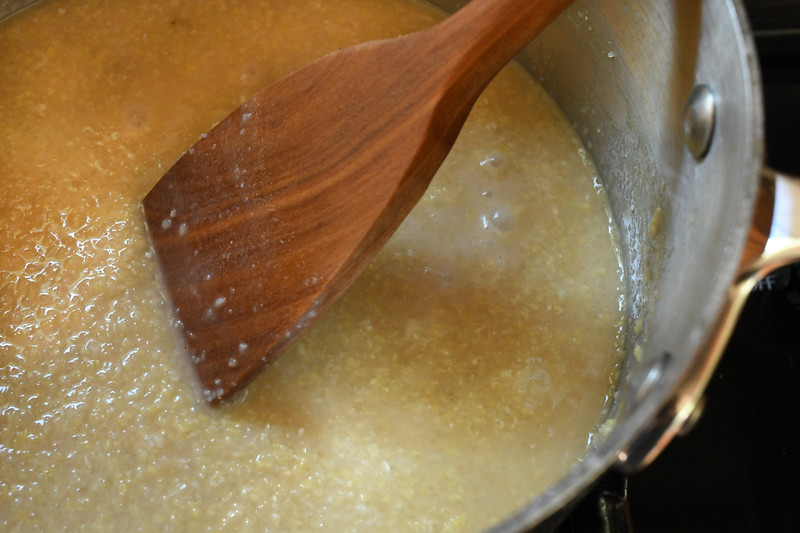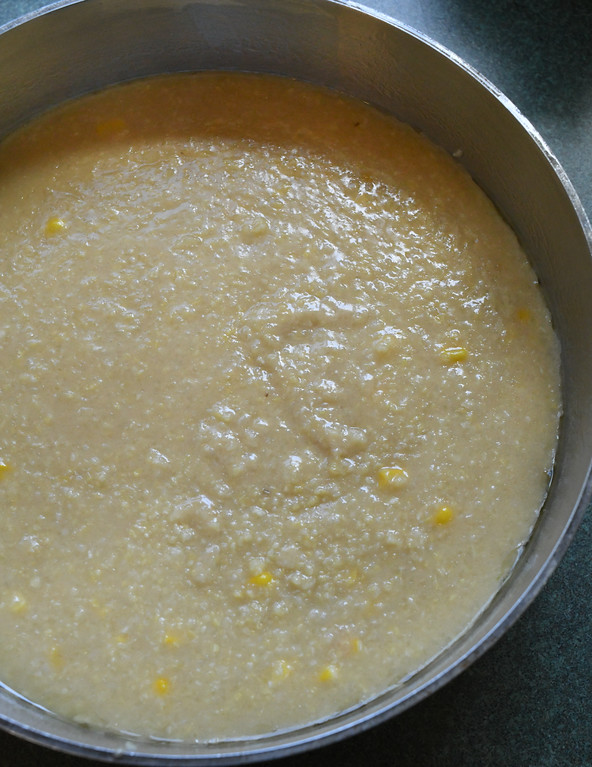
Polenta tends to get a bad rap. People say it takes too much effort and too long to make. I disagree. Stirring up a batch of polenta is as easy as putting ingredients into a saucepan, bringing them to a boil and stirring them together. How hard is that?
The tricks to smooth, creamy polenta are to stir often and watch your saucepan. Don’t walk away from the bubbling pot and expect to come back 20 minutes later to the perfect dish. (That holds true for many foods.) More than likely, you’ll return to find a scorched mess.

A quick refresher on polenta
A staple of Northern Italian cuisine, polenta has been consumed since Roman times. Made from cornmeal, it is reminiscent of hominy grits in its texture and consistency. While grits are made from ground white corn, oats or rice, polenta is comprised of coarsely ground yellow corn. Hence the yellow color of the dish.
To cook polenta, you need a heavy bottomed pan, water or stock, ground cornmeal, a touch of cream and grated Parmesan cheese. You simmer the cornmeal until softened, add the cream and then continue cooking until thick and creamy. Stir in the cheese and simmer until the ingredients have melded together and the polenta is fairly dense.
At that point you have three options: Put the polenta on plates or in a large bowl and serve hot; pour into a greased baking dish and bake until firm; pour into a baking dish, refrigerate until firm, cut the polenta into small rectangles and fry them in olive oil. For the following recipe you’ll go with option two.
Polenta and Eggs with Spring Onions
Serves 2
Ingredients
1/2 teaspoon olive oil
2 ¾ cup chicken stock or water
1/2 teaspoon sea salt
½ cup ground cornmeal
¼ cup light cream
½ cup frozen corn (optional)
2/3 cup grated Parmesan cheese
2 to 4 large eggs
1/3 cup crumbled feta cheese
Ground black pepper, to taste
2 to 3 spring onions, whites and 1-inch of greens sliced
Handful of fresh flat-leaf parsley, roughly chopped
Directions
Preheat the oven to 400° F. Grease a high-sided, oven-safe sauté pan with 1/2 teaspoon olive oil.
Place the stock or water and salt in a medium, heavy bottomed saucepan and bring it to a boil over medium-high heat. Whisk in the cornmeal and reduce the heat to medium low. Simmer for 10 minutes, stirring frequently with a large spoon or spatula. After 10 minutes add the cream and stir to combine.
Cook, stirring continually, for 10 to 12 minutes or until the cornmeal has softened and thickened. Add the optional frozen corn and cook for 2 to 3 minutes.
Remove the pan from the heat and add the Parmesan cheese. Whisk the ingredients together until blended and then evenly spread the polenta in the prepared pan.

Bake for 10 to 15 minutes, until the polenta has begun to firm up. Remove the pan from the oven and, using the back of a spoon, make 2 to 4 wells in the polenta. Crack an egg into each well and return the pan to the oven.
Bake for 10 minutes. Remove the pan from the oven and sprinkle the feta over the top. Return the pan to the oven for another 3 to 5 minutes, until the egg whites have cooked, the yolks have set, and the feta has melted slightly.
Remove the polenta from the oven. Spread the green onions, parsley and black pepper over the top. Serve hot.
4 Comments